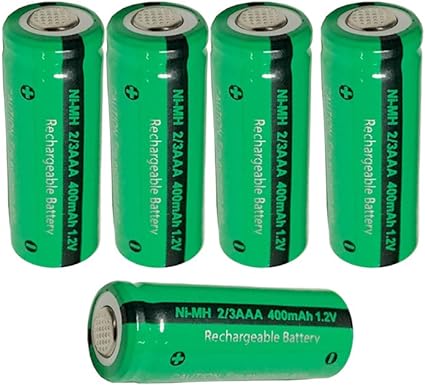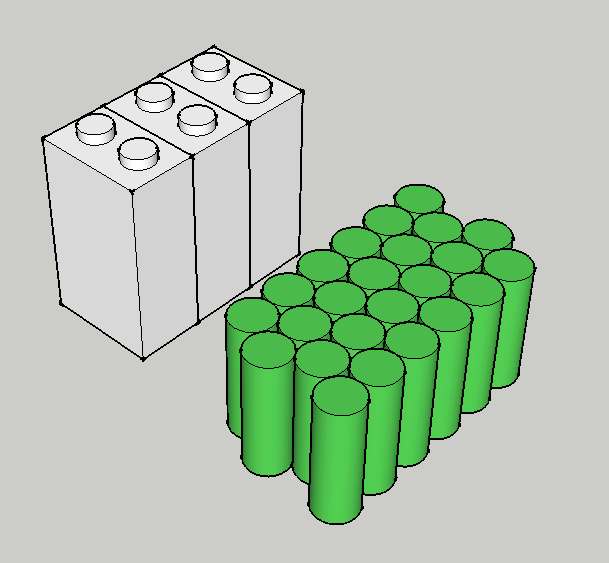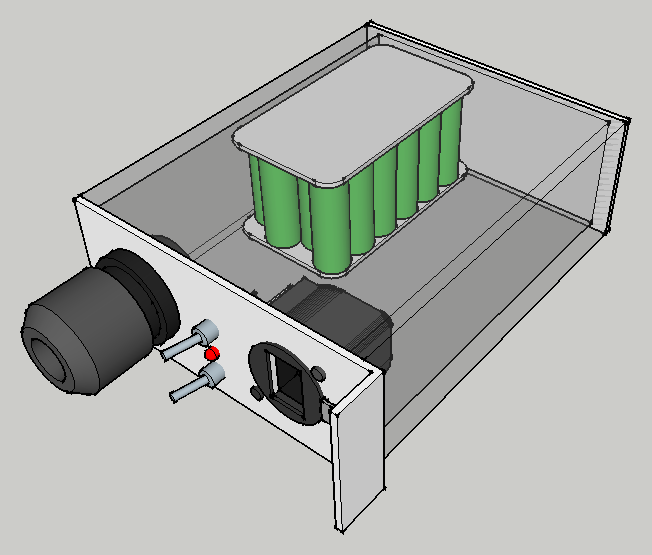Bo Deadly
Well-known member
I'm thinking about a new idea for a power supply that could be handy for a few common annoying scenarios.
First I start with a battery pack of 2/3AAA NiMH cells:
1.2V
400mAh
R 10.2mm
H 29mm

These are really common because they're used in solar installations and so they're cheap. You can get them for ~0.75 USD each in quantities of 20 or so.
A pack of 24 makes 28.8V and of course there's a center tap to make a +-14.4V supply. The size of this pack is about the same as three 9V batteries.
Trickle charging is ~0.04 capacity so 400mAh * 0.04 = 16mA.

Then I use a MeanWell DETN01L-15 SMPS:
DCDC
Isolated
Unregulated
SMT
5V / 253mA in (USB)
30V / 34mA out (+-15V)
L 15.3mm
W 10.9mm
H 7.1mm

This is one of several 1W +-15V DC converters from MW and they're cheap ($5 USD).
So the overall idea is to do USB power -> DETN01L-15 -> CLC filter -> charging / iso circuitry -> 28.8V NiMH battery -> +-14.4V.
This could be a great supply for small pro-audio gizmos. Many power strips have USB ports now. You could plug it into your computer. Or use one of those ubiquitous Apple mains / USB adapters and use wall power. The center tap is isolated from USB through the batteries so even though USB is notoriously noisey, it might be quiet enough to use plugged in and trickle charging. Or unplug it and run on battery. A 20mA gizmo like a DI would last 20 hours.
So what do you think? Will it work? I don't really care what people think about tapping USB for pro-audio. If it works it works. USB ports are everywhere.
First I start with a battery pack of 2/3AAA NiMH cells:
1.2V
400mAh
R 10.2mm
H 29mm

These are really common because they're used in solar installations and so they're cheap. You can get them for ~0.75 USD each in quantities of 20 or so.
A pack of 24 makes 28.8V and of course there's a center tap to make a +-14.4V supply. The size of this pack is about the same as three 9V batteries.
Trickle charging is ~0.04 capacity so 400mAh * 0.04 = 16mA.

Then I use a MeanWell DETN01L-15 SMPS:
DCDC
Isolated
Unregulated
SMT
5V / 253mA in (USB)
30V / 34mA out (+-15V)
L 15.3mm
W 10.9mm
H 7.1mm

This is one of several 1W +-15V DC converters from MW and they're cheap ($5 USD).
So the overall idea is to do USB power -> DETN01L-15 -> CLC filter -> charging / iso circuitry -> 28.8V NiMH battery -> +-14.4V.
This could be a great supply for small pro-audio gizmos. Many power strips have USB ports now. You could plug it into your computer. Or use one of those ubiquitous Apple mains / USB adapters and use wall power. The center tap is isolated from USB through the batteries so even though USB is notoriously noisey, it might be quiet enough to use plugged in and trickle charging. Or unplug it and run on battery. A 20mA gizmo like a DI would last 20 hours.
So what do you think? Will it work? I don't really care what people think about tapping USB for pro-audio. If it works it works. USB ports are everywhere.










